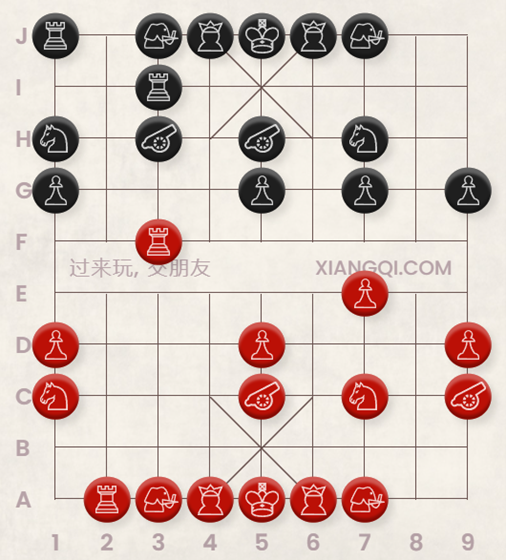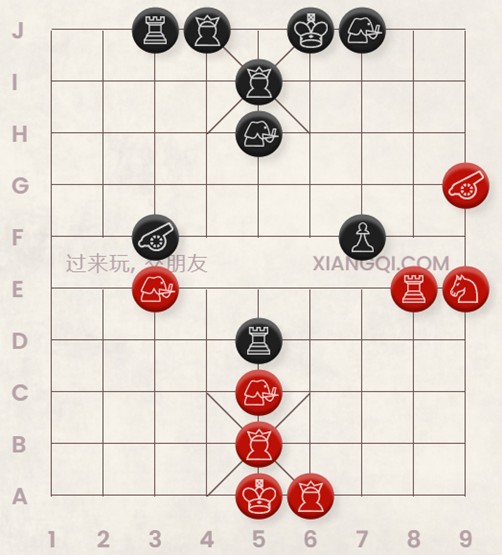5 Most Important Xiangqi Chinese Chess Situation Analysis Indicators
Many Chinese Chess beginners tend to over-emphasize tactical calculation and neglect the importance of situational analysis prior to the calculation. A scientific situational analysis process can be divided into three steps: assessing the situation, setting strategic direction, and setting tactical application. This article introduces 5 indicators to help beginners develop a scientific and comprehensive situation analysis methodology.
Author: Johnny Chen (Former Professional Chinese Chess Player, achieved third place in youth team chess in the China National Intellectual Games and second place in the U14 Group of the National Junior Chess Tournament)
The article will be divided into the following sections:
1. Evaluating the Piece Value
Piece value is the most quantifiable indicator and is usually the first metric to be evaluated. When an experienced player analyzes a situation, he/she will first compare the value of main pieces (Chariots, Horses and Cannons) of both players. It is generally acknowledged that Horse ≈ Cannon ≈ 1/2 Chariot. The side with a higher main piece value is considered having 'material advantage' while another side is thought to be in 'material disadvantage'. Beginners can refer to the following piece value table to get a quicker start on piece value comparison:
Piece Value
Soldier (Before crossing the river) 1
Soldier (After crossing the river) 2
Advisor 2
Elephant 2
Horse 4
Cannon 4
Chariot 9
2. Evaluating the Mobility of Pieces
Piece mobility refers to the range that a piece can reach or attack in the current position. It is especially important for Chariots, Horses and Cannons, because the higher the mobility is, the easier it is to maximize their strength. For Chariots, the one located in an open position has higher piece mobility than the one in a closed area; for Horses, the one which is block-free and is on the center of the board has higher mobility than the one on the edge of the board or with many blocks, and a Horse can have up to 8 control points. In the case of Cannons, a suitable mount helps gain control of the main files or ranks; on the contrary, a Cannon lacking mount has no threat as it cannot attack. In the picture below, the red Chariot controls the main files as well as ranks, and the road for the Horse is clear, while the black Chariot is in a closed area and the road for the Horse is blocked, therefore red side has a clear advantage.
3. Evaluating the Threats
The threat here includes both the threat to the opponent's General as well as other pieces. High level of threat to the opponent's General means there are more chances to apply checkmate tactics, while a higher threat to other pieces makes it easier to capture materials. Generally speaking, pieces that are closer to the opponent’s palace pose a greater threat to the General than those that are far away, especially for pieces that attack at close range such as Horses and Soldiers. The threat to other pieces of the opponent depends on specific circumstances, such as whether the opponent pieces are constantly exposed in your attack range or lacking protection, and so on.
4. Evaluating the Number of Pins
Pinning means that one uses its piece (usually Chariots and Cannons) to make it difficult for the opponent to move its pieces away from a certain range of position, otherwise piece(s) will be lost. In the picture below, both Red Chariots are pinning one Black Chariot and one Black Cannon, making it impossible for them to leave the file without suffering material loss. At the same time, Red Horse and Cannon are free to move and can use this opportunity to gain materials or launch an offensive. Therefore, Red clearly has positional advantage despite the fact that the piece values on both sides are approximately equal.
5. Evaluating the Piece Coordination
As the saying goes, 'teamwork makes the dream work', coordination among pieces should also be considered when evaluating the situation in addition to the position and role of each piece, whether you are attacking or defending. In the picture below, Red Chariot, Horse, and Cannon on the right make up the 'flanking trio', forming a powerful attack that Black can hardly resist. On the contrary, Black Chariot, Horse, and Cannon are scattered and lack coordination, making it difficult to form an attack in a short period of time.
Want to practice in the real game?




